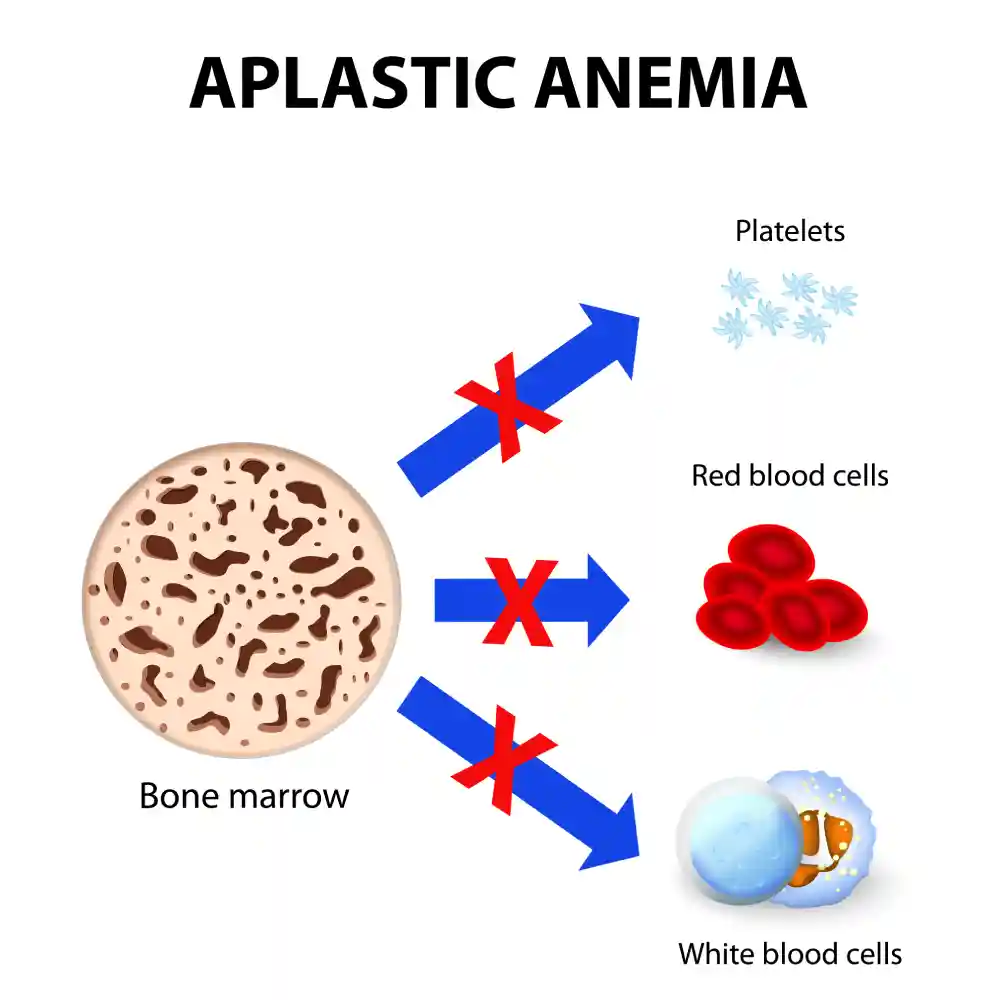Aplastic anemia and pancytopenia

Aplastic anemia is the condition in which the bone marrow is no longer able to produce red corpuscles in sufficient amounts, and pancytopenia means that the bone marrow can no longer produce any cellular element in adequate amounts, be it red corpuscles, white cells or platelets.
Such a condition can result from a multitude of causes; however, in most cases, a definite cause cannot be established. They may result from viral infections, after chemotherapy or radiotherapy, or due to long-standing chronic debilitating diseases as cancer and liver failure. When patients present with aplastic anemias or pancytopenia, they exhibit features of deficiency of blood elements. For example, patients who have anemia suffer from easy fatiguability, breathlessness, effort intolerance and depressed brain functions. Patients who suffer from decreased white blood cell count suffer from repeated and non-resolving infections. They may also suffer from opportunistic infections, which are organisms that generally can’t infect healthy human beings but take advantage of the weakened immune system to produce severe infections, while patients with decreased platelet count suffer from easy bruising and bleeding which can occur from virtually all mucosal surfaces be it the mouth, the gastrointestinal system, the nose, the urinary tract or may even manifest as heavy menses in reproductive-age females.
Aplastic anemia is a potentially fatal condition unless adequately treated, and treatment is dependent on the cause, but if the cause cannot be specified or is treated and the bone marrow didn’t recover, bone marrow transplant remains the ultimate solution.
